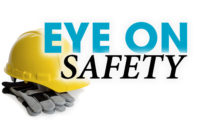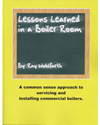Make sure your company is prepared for cold weather

Last year we had a winter that never seemed to end.
Not only was it a challenge to keep employees motivated and warm, but it also was a daunting task to keep them safe. As we approach the winter season it is time to be proactive and mitigate safety issues, accidents and injuries.
Two of the most common cold-temperature conditions that occur are frostbite and hypothermia.
Frostbiteis the freezing of deep skin tissue layers and leads to hardening and numbing of the skin. It usually affects the fingers, hands, toes, feet, ears and nose.
Hypothermiaoccurs when the body’s temperature falls below 95° F. The person becomes tired and drowsy, begins to shiver uncontrollably, moves clumsily, and is irritable and confused. As the hypothermia progresses, speech become slurred, behavior may become irrational, and unconsciousness and heart failure can occur.
By following safe work practices we can minimize the risk of frostbite and hypothermia:
Usethe “buddy” system (work in pairs) for extended outdoor work;
Drinkwarm beverages;
Wearwarm, layered clothing, including hat and gloves. Pay attention to protecting feet, hands, face and head. Up to 40% of body heat can be lost when the head is exposed. Spare clothing should be available to change into in the event anything gets wet.
Takefrequent, short breaks in a heated location.
Educateemployees to recognize and seek medical help for workers that have symptoms of cold- and heat-related stresses.
In the event of a cold-related incident:
Raisethe body temperature to prevent the progression of symptoms. Move to a warm location, remove wet clothing, add layers of clothing and provide warm fluids to drink.
Seekimmediate medical help if the person is unconscious or if symptoms do not improve within 20 minutes.
In addition to cold-related stresses, another issue is weather-related slips, trips and falls. According to the Workers Compensation Fund, statistics show 80% of slips and falls due to snow and ice occur in parking lots and on sidewalks, with more than 50% occurring between the hours of 6 a.m. and noon.
To combat this, there have been advances in weather-related footwear. After some research and the help of Mary Prahler from First Supply there may be a solution to the dilemma of employees wearing traction overshoes without the inconvenience of taking them on and off all day. This website (http://tinyurl.com/kxzcgqu) is one example of a studded overshoe worn over steel-toed shoes that will meet the demanding criteria.
It should be stressed that when walking to and from the office employees should avoid slick-soled or high-heeled shoes. A pair of boots with rubber treads is a must for walking during winter conditions and can be changed after entering the building.
We cannot control the weather, but we can be proactive and plan, equip and train to minimize cold weather-related incidents. More resources can be found at http://tinyurl.com/mnyrlqk.
Author bio: Melanie Felladore is the human resources, benefits and risk manager for Waterbury, Ct.-based Torrco. Eye on Safety is produced by members of ASA’s Safety Committee. For more information, visit www.asa.net/safety-resources.
HELPFUL LINKS:
Looking for a reprint of this article?
From high-res PDFs to custom plaques, order your copy today!








